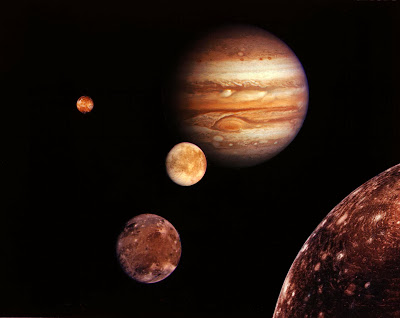

| Visitors Now: | |
| Total Visits: | |
| Total Stories: |

| Story Views | |
| Now: | |
| Last Hour: | |
| Last 24 Hours: | |
| Total: | |
Seeding Life on the Moons of the Outer Planets via Lithopanspermia from 1 billion life bearing meteroids from Earth and Mars
Material from the surface of a planet (like Earth or Mars) can be ejected into space by a large impact and could carry primitive life-forms with it. Researchers performed n-body simulations of such ejecta to determine where in the Solar System rock from Earth and Mars may end up. They found that, in addition to frequent transfer of material among the terrestrial planets, transfer of material from Earth and Mars to the moons of Jupiter and Saturn is also possible, but rare. They expect that such transfers were most likely to occur during the Late Heavy Bombardment or during the ensuing 1–2 billion years. At this time, the icy moons were warmer and likely had little or no ice shell to prevent meteorites from reaching their liquid interiors. They also note significant rates of re-impact in the first million years after ejection. This could re-seed life on a planet after partial or complete sterilization by a large impact, which would aid the survival of early life during the Late Heavy Bombardment.
The researchers calculated that over the course of 3.5 billion years — roughly the amount of time Earth is known to have possessed life — about 200 million meteoroids large enough to potentially shield life from the rigors of space were blasted off Earth. They also estimated roughly 800 million such rocks were ejected off Mars during the same period. More rocks escape from Mars because Martian gravity is a little more than a third that of Earth's.
Past research suggested moderately-sized rocks ejected from impacts could protect organisms from the dangers of outer space for up to 10 million years. The scientist calculated about 83,000 meteoroids from Earth and 320,000 from Mars could have struck Jupiter after traveling 10 million years or less. Also, roughly 14,000 from Earth should have hit Saturn in that time, and no more than 20,000 from Mars.
4 great moons of Jupiter: Io, Europa, Ganymede and Callisto. Image Credit: NASA/JPLM
Source: http://nextbigfuture.com/2013/12/seeding-life-on-moons-of-outer-planets.html



